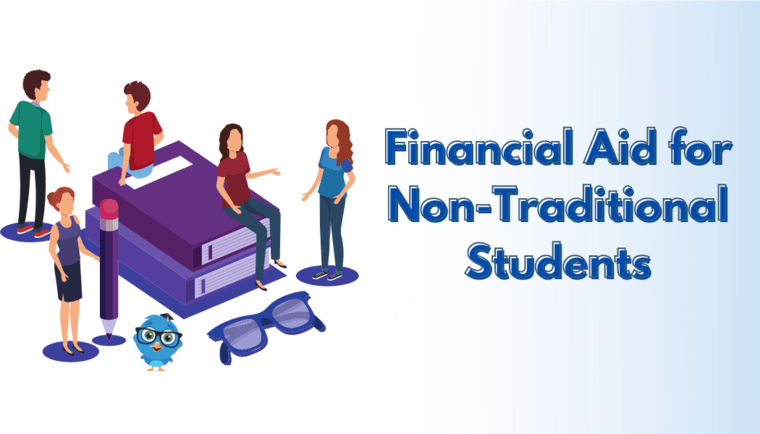
School attendance is the process that involves attending to students' academic and educational needs in order to make sure that they get what they need to know, as well as that they succeed in their studies. It is an integral part of education, and has been for centuries.
Attendance is a basic requirement for public schools in the United States. To be able finish school work on time is crucial for students. It allows them to do well in class and learn more.
Teachers should be able see and track their students' attendance on a daily base. It is important that teachers are able to evaluate their students and see if they're doing well. They can also identify any problems.
Many states, in addition to recording attendance, are trying to shift focus from simply showing up for class to learning and engaging instead. This is a very good idea because it will help students be more successful and encourage positive student behaviour.

The number of missing and lost students makes up a large part of the problem of chronic absenteeism at school. In a recent Stanford University-Associated Press study, it was discovered that over 240,000 children were missing from the schools in two of the states that experienced the worst closings due to the pandemic.
The official school rosters still list some of the students who missed school due to pandemic. However, they haven't seen a teacher in a while or don't have any connection to their school or its staff. It is not easy to track these missing students and their families as there are several factors that can cause them to be missing.
1. They don't have a fixed address. They live with someone else. They are homeless, or in foster-care 4. They are not fully immunized to prevent COVID-19 infections
Fear of returning to classrooms is also a reason why many students miss school during pandemics. This is a dangerous situation because it could spread coronaviruses, which can cause serious illnesses or even death.
This is a critical part of the recovery plan. This is a crucial part of recovery and can easily be done with a range of tools.

This can include tracking attendance, talking with families and providing support for any barriers to school attendance. You can also do this by partnering up with local organizations.
A key part of this strategy is making sure that students have access to an internet-connected device at home. This could be an internet-connected computer, tablet, or smartphone.
FAQ
What are the advantages of e-learning for students and teachers?
E-learning provides both students with better learning outcomes and teachers with more flexibility. It also makes it possible to access information anytime and anywhere learners want. E-learning makes it possible for educators to communicate with their students via technology in ways that were not possible before.
E-learning allows teachers the opportunity to give personalized instruction and feedback to students, and also support their progress. This leads to increased motivation and engagement among students. E-learning is a great way for teachers to learn communication, collaboration, and critical thought skills. They can also use it to enhance teaching practice by providing opportunities for self-reflection and reflection on others' experiences.
E-learning allows for a reduction in training costs. For example, if a teacher wants to train his/her class about a new topic, he/she will have to spend money buying books and materials. You don't have to purchase the exact same materials online, however.
What should an eLearning program look like?
Your eLearning course design should encourage learners to interact with the material.
This means that the design needs to be easy to navigate, and the content needs to be presented clearly.
This also means the content has to be engaging and entertaining.
To ensure that your eLearning course meets these requirements, you need to focus on three things:
Content
The first thing you need to decide is what content you want to include in your eLearning course. Not only should you decide what content to include, but also how long each section should take. For example, if you want to teach someone how to write a letter, then you need to decide how much time you want to spend on each topic.
Navigation
Your second major decision to make is how your learners want to navigate your course. Do you want your learners to navigate through the course one page at a time? Do you want them to skip to the most important parts?
Design
Finally, you need to decide how you want your course to appear. You need to determine how long each screen should take to load and what font size you should use. It is also important to decide whether graphics (such as photos) will be included.
Once you have made all these decisions, test your course to ensure it works.
How do I start eLearning?
It's a good idea to begin small if you don't know how to create online classes. Start small by creating a tutorial or quiz.
This will allow you to move on to more difficult projects once you have mastered it. If you don't know HTML well, it is a good idea not to begin by creating lessons from pre-built templates.
Statistics
- E-learning is intended to enhance individual-level performance, and therefore intend to use of e-learning should be predicted by a learner's preference for self-enhancement (Veiga, Floyd, & Dechant, 2001). (sciencedirect.com)
- Hedonism incorporates intrinsic motivation, including novelty, challenge, excitement, and pleasure (Schwartz et al., 2012), which is likely to predict user perception of e-learning enjoyment. (sciencedirect.com)
- India's PC market clocks 9.2% growth to 3.4 million units in the September quarter (economictimes.indiatimes.com)
- Interestingly, students' participation in online training grew by 142% in the past year alone, indicating how quality education and up-to-date teaching pedagogy are preferred by learners and working professionals to upskill across India. (economictimes.indiatimes.com)
External Links
How To
How is eLearning different from traditional teaching methods and how does it differ?
eLearning is a technology that has been around for a while. In fact, many schools still teach in the old-fashioned manner. But eLearning offers many advantages over traditional teaching methods. Here are some:
-
E-learning costs less than traditional teaching methods.
-
Students can learn at their own pace.
-
Teachers don't have as much pressure to get students up and running before class begins.
-
Multiple versions of the same course can be easily created by teachers so that they teach slightly different concepts.
-
Learning can be done through chat rooms or discussion boards. Learners can also interact with one other and ask questions.
-
Students can collaborate on projects and assignments together.
-
Students can access videos and presentations from the comfort of their classrooms.
-
Online courses can be accessed 24 hours a days, 7 days per week.
-
Learners can study from anywhere and at any time.
-
Learners can always go back and review previous lessons.
-
All the progress made by learners can be tracked throughout the year.
-
Instant feedback can be provided to learners about their performance.
-
Learners have the freedom to complete their assignments and projects at any pace that suits them. They can submit them later if necessary.
-
Download files that contain images and notes for learners.
-
Learners can print copies of their assignments and handouts.
-
Learning professionals can save money by purchasing supplies and books once per term instead of buying them all.
-
Students can learn more efficiently when they study on their own.
-
Learners can work with others in the same field.
-
Learners can learn from each other and share their knowledge.
-
Learning can be done through blogs and articles.
-
You can search the Internet for solutions to your specific problems.
-
Learners have the ability to create their own content.
-
Peers and tutors can offer assistance to learners.
-
Learners can make friends with people who share similar interests.
-
Learning can help improve writing skills.
-
Learners can discover how to solve creative problems.
-
Students can practice public speaking.